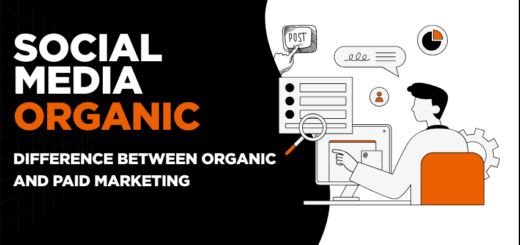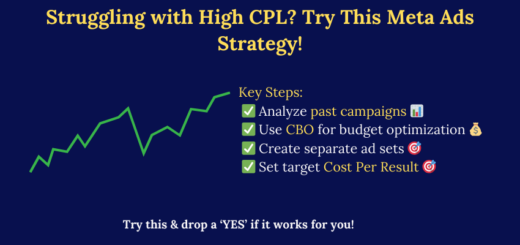Traditional vs Digital Marketing: Key Differences
In today’s world, everything is evolving. We have witnessed significant changes in the way we live, the way we work, and most importantly, how we communicate and market. Just like we adapt to changes in fashion, food, and lifestyle, the marketing world is undergoing a transformation. Traditional marketing methods, once the primary way to connect with consumers, are now being replaced by modern techniques that align with the digital age. Digital marketing has become the most effective way to reach audiences, and this shift is inevitable.
Traditional vs Digital Marketing
1. The Transition from Traditional to Digital Marketing
Not long ago, marketing was done in a very different way. When a new movie was released, we would eagerly wait for it to air on television. We would sit in front of the TV at the scheduled time, flipping through channels, and watching the film. It was an event, and we had limited options. The concept of on-demand entertainment was nearly non-existent. Fast forward to today, and we have access to streaming services that allow us to watch anything, anytime, anywhere. This shift in how we consume content reflects the broader changes in how marketing operates.
In the past, businesses would advertise their products through TV, radio, newspapers, and billboards. These were the primary channels to connect with potential customers. However, today, our audience has shifted to the internet, and the methods of reaching them must evolve accordingly. Digital marketing, which includes social media advertising, search engine optimization (SEO), pay-per-click (PPC) campaigns, and content marketing, has taken over as the most effective way to engage with consumers.
As the consumer audience moves to digital platforms, businesses must adapt. Continuing to use traditional marketing techniques in a world that is increasingly digital is like trying to sell ice to Eskimos. If you are advertising on TV when your audience is on Instagram or YouTube, you’re wasting valuable resources. Digital marketing not only helps businesses stay relevant but also ensures that their marketing strategies are aligned with current consumer behavior.
2. The Importance of Digital Marketing in Today’s Business World
Today’s world is driven by technology. Our lives, social interactions, and even business operations are now influenced by the digital space. Whether you’re in a small village or a big city, you are part of the ever-growing digital ecosystem. More and more businesses are realizing that digital marketing is not just a good-to-have but a must-have in today’s competitive market. Digital marketing allows businesses to engage with their target audience on platforms they are already spending time on. It offers unparalleled opportunities to reach, engage, and convert potential customers.
3. The Cost-Effectiveness of Digital Marketing
One of the biggest benefits of digital marketing is its cost-effectiveness. Traditional marketing channels such as TV ads, radio, billboards, and print media require a significant budget. These methods may reach a large audience, but there is no guarantee that the audience will be relevant or interested in the product. Digital marketing, on the other hand, allows businesses to reach a highly targeted audience with a fraction of the cost.
For instance, if a business wants to run ads on Facebook or Google, all they need is an account, which is free to set up. With the right tools and skills, businesses can create ads, manage campaigns, and adjust budgets in real-time. You don’t need to spend thousands of dollars upfront. Even with a modest budget of ₹500 or ₹1000 per day, you can reach your targeted audience effectively. And if you’re not familiar with running ads, you can hire a freelancer or digital marketing expert to handle it for you within your budget.
This low barrier to entry makes digital marketing an excellent option for businesses of all sizes. Small businesses, startups, and even individual entrepreneurs can now compete with larger companies on a level playing field. The return on investment (ROI) for digital marketing campaigns is often much higher than traditional marketing methods.
4. Targeting the Right Audience
Another significant advantage of digital marketing is the ability to precisely target your audience. In traditional marketing, such as TV ads or billboards, your message is broadcast to everyone, regardless of whether they are part of your target audience. For example, if you’re selling a product aimed at women aged 30 and above, your TV ad will be seen by people who may not be interested in your product. This means your advertising budget is spent on reaching irrelevant people.
With digital marketing, you can target your ads based on various factors such as age, gender, location, interests, online behavior, and even purchasing history. Platforms like Facebook, Google, and Instagram allow you to create highly specific audience segments, ensuring that your ads are only shown to people who are most likely to be interested in your product. This means your advertising budget is used more efficiently, and you are likely to see higher engagement and conversions.
For example, if you are selling fitness products for women over 30, you can target your ads to women in that age group who have shown interest in fitness, health, or wellness. You can even narrow it down by location or income level. The level of targeting available in digital marketing is unmatched, making it much more effective than traditional methods.
5. Measuring Results and Optimizing Campaigns
One of the greatest advantages of digital marketing is the ability to measure and analyze results in real-time. With traditional marketing, such as TV ads or print campaigns, it was difficult to measure the effectiveness of the campaign. You could track sales, but you couldn’t know how many people saw the ad, engaged with it, or took action as a result of it.
In digital marketing, platforms like Google Ads, Facebook Ads, and others provide detailed analytics that allow you to track every aspect of your campaign. You can see how many people viewed your ad, clicked on it, visited your website, and even made a purchase. This level of tracking allows businesses to make data-driven decisions and adjust their strategies accordingly.
For example, if you notice that a particular ad is performing better than others, you can allocate more of your budget to that ad to maximize its effectiveness. On the other hand, if an ad is underperforming, you can make changes to improve it. This ability to optimize campaigns in real-time ensures that businesses are always improving their marketing strategies.
6. Global Reach and Accessibility
Another major benefit of digital marketing is the ability to reach a global audience. Traditional marketing methods like print ads or TV commercials are often limited by geographic constraints. Running TV ads in a specific city or region can be expensive, and even then, your reach is limited to that area.
With digital marketing, however, businesses can reach customers anywhere in the world. Whether you’re sitting in a small town in India or a big city in the US, you can run targeted ads that reach people on the other side of the world. Platforms like Facebook, Google, and Instagram allow you to set your target location, so you can run ads in specific countries, states, or even cities.
This global reach makes digital marketing a powerful tool for businesses looking to expand their market and attract international customers. It’s an opportunity to connect with new audiences, open up new revenue streams, and grow your business beyond geographical limitations.
Conclusion:
In today’s fast-paced, digital world, businesses cannot afford to ignore the power of digital marketing. The transition from traditional to digital marketing is no longer optional; it’s essential for survival. Digital marketing offers numerous benefits, including cost-effectiveness, precise targeting, measurable results, and global reach. These advantages make it the most efficient way to connect with customers and grow a business in the digital age.
As more businesses embrace digital marketing, the landscape will continue to evolve. To stay competitive, businesses must adapt their strategies, embrace new technologies, and use digital marketing tools to their full potential. The future of marketing is digital, and companies that fail to recognise this will be left behind.
Digital marketing isn’t just a trend; it’s the future of marketing. Businesses that leverage it’s full potential will be the ones that thrive in today’s ever-changing business environment.



